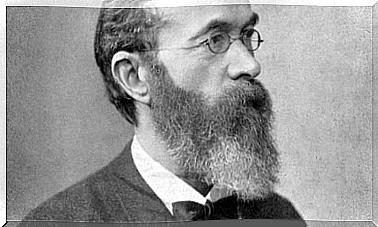The Reverse Or Positive But: A Way To Eradicate Negative Thoughts

It is still not clear to me why we humans tend to build catastrophic and negative ideas about others and ourselves, instead of opting for more positive thoughts.
It is contradictory that instead of leaning on our valuable side, that formed by our resources, potentials and attributes of value, we emphasize the flank of our weaknesses, devalues or those resources that we do not have in our repertoire. Moment in which a series of self-deprecating sensations and feelings assail us.
Next, I will reflect on it and explain the reverse but technique as a possible strategy to eradicate negative thoughts.
That cognitive fauna called thoughts
Some of the behaviors that develop around these sensations, which cognitive psychologists called “cognitive distortions”, are related to each other, despite having subtle differences. However, what is important about all this is the degree of negativity and devaluation that prevails in cognitions, emotions and actions.
Many of these ideas come as a surprise and proliferate like germs that invade our mind and end up stereotyping in it.
- For example, thoughts that whir us around and that are associated with impotence such as ” I will not be able to “, ” I am not capable ” or ” this is not for me, it is too much “.
- Beliefs about what others think, as if you could read their minds: ” they look at me a lot … I’m sure I’m dressed badly “, ” those are talking about me “.
- There are also those who for a minimum negative fact disrupt everything positive that was done.
- The “I should have” or “I could have done” that always mark what should have been done and what was not done.
- Thoughts that predict a negative or catastrophic future.
- Those who continuously compare and in which the person who has them always loses or those who disqualify the good that happens to them, as if it were the result of the arbitrariness of life …
In short, there are many beliefs that sustain a strong self-devaluation and that lead to see in others and in oneself opaque and unhappy aspects.
The point is that this catastrophic cognitive fauna does not remain anchored in thought, but moves quickly and inexorably into action with the consequent emotions. And from there a beautiful and regrettable prophecy is built that is self-fulfilling.
But but…
These negative ruminants are suspicious and, in some cases, become paranoid, since it is not possible to spend your life thinking about what others think about yourself or imagining that the world is against you.
They are great allies of “but”, a linguistic formula that they apply to most of their verbalizations in various ways: ” but “, ” too bad … ” or “despite … “. All of them interjections that cancel the statements they make. A real trap.
The ” but ” is a turning point that breaks a sentence when it is positive. Let’s see it with examples: “ she is a very good person and in general she does things well, but… when she gets angry it is terrible ”; ” We had a great time on the weekend, we don’t argue at all … but he has a bad character and answers badly “.
In general, negative and catastrophic people rarely have a positive speech in which they value others or themselves; even when they do, they ultimately derail and invalidate it with those “buts” who introduce a devaluing description that overrides the first value sentence.
It is important to note, although we have already said it previously, that the “but” is also directed at oneself. For example: ” the truth is that it was good to do the homework quickly, but I always do it at the last minute ” or ” I am very studious, too bad I can’t speak fluently “.
Breaking such a systematization of the use of the “but” is quite difficult, since it always twists the wheel to the negative. It is an inertial machinery that causes everything to repeat itself and perpetuate the negative point of view. For this reason, it is difficult to reduce the mechanism of negativities in a 180º turn or to go from the negative to the positive, but not impossible.
The reverse but technique
One of the most effective results is to go step by step and use the reverse but technique. This consists of not avoiding the influx of negative thoughts, but quite the opposite: letting them flow, letting go and saying them. And once they are expressed, the “but” is used to direct the discourse towards the positive.
As a mechanism, the reverse but is similar to the one that is routinely systematized, but it transforms the negative into the positive. The following examples show us.
- “ The bronchitis killed me, I was stopped a lot of days of work, BUT I was able to rest. It was a mini-vacation that I deserved ”.
- “ I should have realized that I was a bad person. In the end he ended up scamming me, little money, BUT thank goodness that I did not risk more money. This teaches me to be more careful in relationships … and proactive . “
- “They look at me because I am wearing this flowered shirt, they will say how ridiculous, BUT how good it is to dress as you want and be free. They stare at me? I don’t care, I have to focus more on myself and worry less about others . “
The reverse or positive but is to extract learning from a situation. It’s something like asking yourself the following: “ What does this idea teach me? “; “ What message of learning does this situation transmit to me? “; What does this scene teach me? “.
This simple technique initiates a kind of negotiation between personal devaluation and self-worth. As it is difficult to de-systematize the disqualifying automatism at once, this is an intermediate step that allows us to realize that not everything is a catastrophe and that there is no negative situation as such, but that it is only a disqualifying personal perception.
Now reader … finish this article with three “positive buts” and start practicing …!









